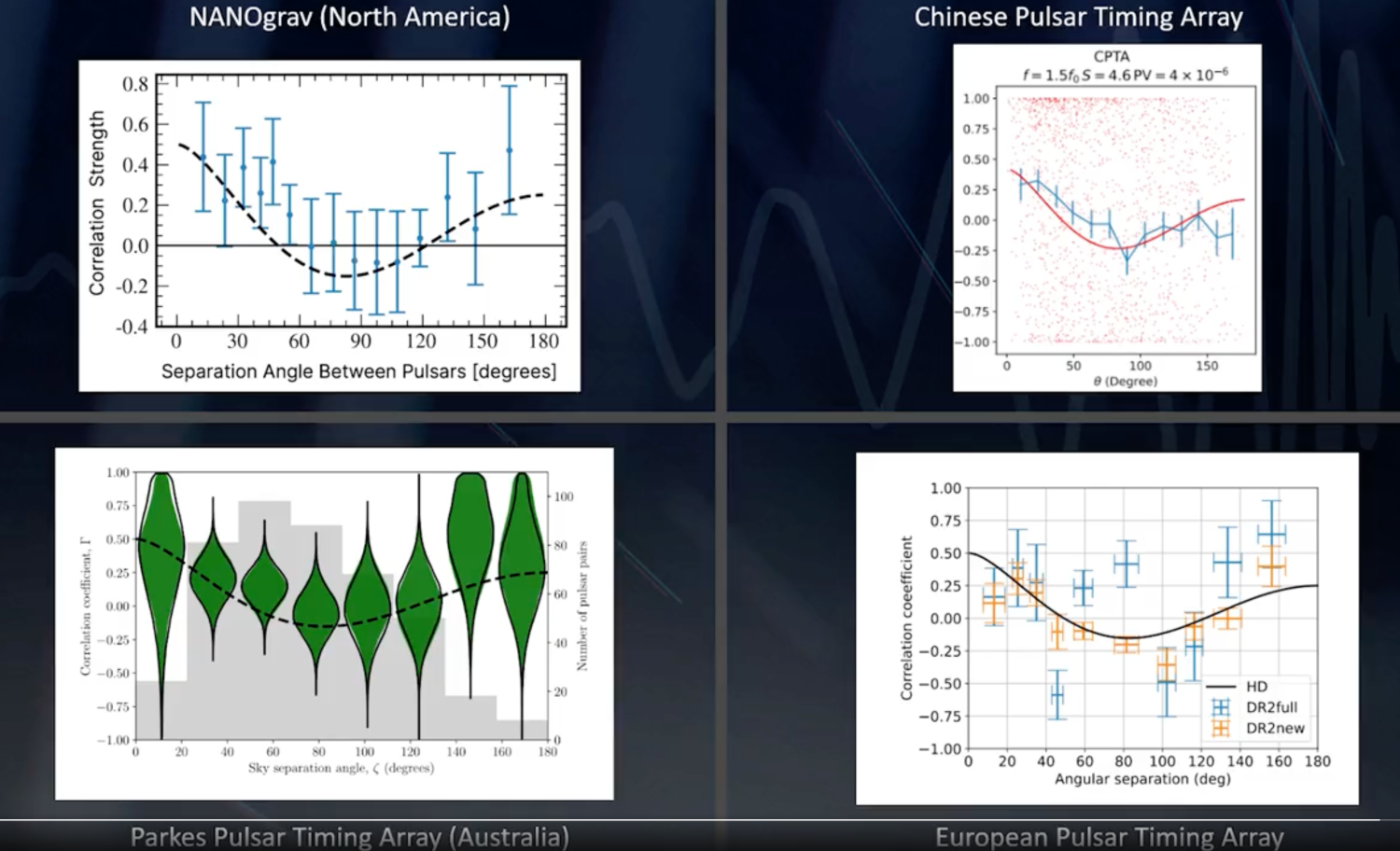SKA pathfinders provide strongest evidence yet for low-frequency gravitational waves
In multiple scientific articles, astronomers detailed the results of up to decades of observations to spot ripples in spacetime by focusing on extinguished stars called pulsars. Among the SKA pathfinders – designated telescopes or systems undertaking SKA-related technology, science, or operations activities – that enabled the findings are:
- India’s Giant Metrewave Radio Telescope (GMRT)
- Effelsberg in Germany
- CSIRO’s Parkes radio telescope, Murriyang, in Australia
- China’s Five hundred meter Aperture Spherical Telescope (FAST)
- Arecibo in Puerto Rico, which enjoyed SKA pathfinder status until its 2020 collapse.
The iconic Lovell telescope that guards over the SKAO’s headquarters in the UK also played a role. It forms part of eMERLIN, the UK's array of radio telescopes, which is an SKA pathfinder.
Though scientists using the Laser Interferometer Gravitational-Wave Observatory (LIGO) achieved the first direct observation of gravitational waves in 2015, it involved measuring interference in laser beams – not radio waves emanating from pulsars. The waves were then traced to the collision of two stellar-mass black holes 1.3 billion lightyears ago.
Why do astronomers zone in on pulsars? Senior scientist at the Max Planck Institute for Radio Astronomy and core member of the SKA Pulsars Science Working Group, Dr David Champion, explained: “Pulsars are excellent natural clocks. We use the incredible regularity of their signals to search for minute changes in their ticking to detect the subtle stretching and squeezing of spacetime by gravitational waves originating from the distant Universe.”
The results will now be pooled through the International Pulsar Timing Array consortium to confirm the detection of gravitational waves using pulsars. Astronomers will also search for the signal’s source, with the likely suspects pairs of supermassive black holes orbiting each other at the centre of galaxies.
These efforts will expand this emerging area of science, which forms a key SKA science goal.
“The latest findings mark the culmination of decades of effort in precision pulsar timing,” said the SKAO’s Science Director, Dr Robert Braun. “They are a major step towards opening this exciting new window into gravitational wave physics. The SKA telescopes’ contribution to precision pulsar timing will undoubtedly provide new insights, but should also allow individual merger events and late stage in-spirals to be witnessed as well.”
Read the news releases of the various groups:
- European Pulsar Timing Array (EPTA), working with Indian and Japanese scientists: “EPTA announces evidence for nanohertz gravitational waves”
- Parkes Pulsar Timing Array (PPTA): “Australian astronomers find possible 'fingerprints' of gravitational waves”
- Chinese Pulsar Timing Array (CPTA): “China's Tianyan FAST made a major breakthrough in the search for gravitational waves in nanohertz”
- North American Nanohertz Observatory for Gravitational Waves (NANOGrav): “Scientists use exotic stars to tune into hum from cosmic symphony”





